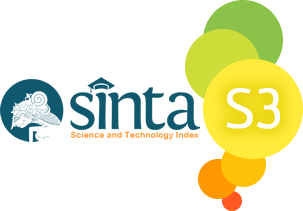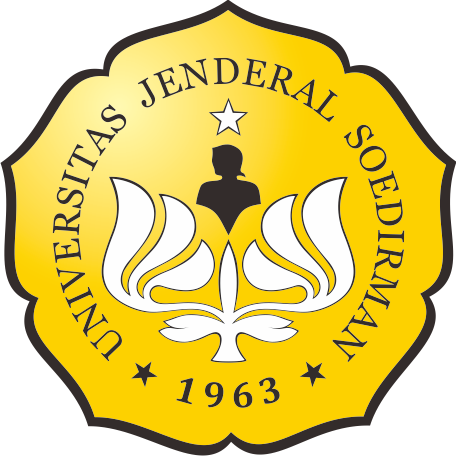ISOLASI BAKTERI ASAM LAKTAT DARI KIMCHI DAN KEMAMPUANNYA MENGHASILKAN ZAT ANTI BAKTERI
Abstract
South Korea is famous for its fermented food called Kimchi, a traditional Korean food fermented from pickled vegetables with a mixture of spicy seasoning. Kimchi is now one of functional food products because of there are lactic acid bacteria that are probiotic and can produce bacteriocin compounds. These bacteriocin compounds may inhibit or have anti-bacterial activity. The purpose of this study was to obtain isolates of lactic acid bacteria from store-bought kimchi and homemade kimchi, to examine the antibacterial agent produced by lactic acid bacteria isolated from kimchi against Escherichia coli and Staphylococcus aureus bacteria. We conducted a Disk Diffusion Method to tests the bacteriocin activity, and data were descriptively analyzed. The results showed that eight isolates of lactic acid bacteria from store-bought kimchi and homemade kimchi homemade were able to inhibit the growth of tested bacteria, S. aureus and E. coli. Isolate D1 isolated from store-bought kimchi has largest inhibitory capability against S. aureus and E. coli; it has 16.00 mm and 17.33 mm inhibitory zone, respectively. Isolate B2 isolated from homemade kimchi has the most significant inhibitory ability against S. aureus and E. coli; it has 16.67 mm and 17.67 mm inhibitory zone, respectively. The lowest ability to form clear zone was found on isolate D2 isolated from homemade kimchi. The inhibitory zone of produce by strain D2 against S. aureus and E. coli were 7.67 mm and 8.67 mm, respectively.
Keywords
Full Text:
PDFReferences
Adib A. 2015. Fungsi Probiotik dalam Saluran Cerna dan Kesehatan [Internet]. Binus University Food Departement of Food Technology [cited 21 Feb 2017]. Available from: http://foodtech.binus.ac.id/2015/07/08/fungsi-probiotik-dalam-saluran-cerna-dan-kesehatan/
Bella D. 2016. Aktivitas Bakteriosin Bakteri Asam Laktat yang Diisolasi dari Air Penggumpal Tahu Alami [Skripsi]. Salatiga: Fakultas Biologi, Universitas Kristen Satya Wacana.
Benkerroum N, Ghouati Y, Ghalfi H. 2007. Screening for Bacteriocin-producing Lactic Acid Bacteria from Various Moroccan Food Products and Partial Characterization of Putative Bacteriocins. Biotechnology 6:481–488. https://doi.org/10.3923/biotech.2007.481.488
Daeschel MA. 1993. Application and Interactions of Bacteriocins from Lactic Acid Bacteria in Foods and Beverages. In Bacteriocins of Lactic Acid Bacteria. New York: Academic Press Inc. https://doi.org/10.1016/B978-0-12-355510-6.50012-9
EUCAST. 2015. EUCAST Disk Diffusion Method for Antimicrobial Susceptibility Testing. European Society of Clinical Microbiology and Infectious Disease. Available from: www.eucast.org
Geo FB, Janet SB, Stephen AM. 2001. Mikrobiologi Kedokteran Edisi I. Jakarta: Salemba Medika.
Khedid K, Faid M, Mokhtari A, Soulaymani A, Zinedine A. 2006. Characterization of Lactic Acid Bacteria Isolated from the One Humped Camel Milk Produced in Morocco. Microbiological Research 164 (2009): 81–91. https://doi.org/10.1016/j.micres.2006.10.008
Kim J, Chun J, Han H. 2000. Leuconostoc kimchii sp. nov., A New Species from Kimchi. Republic Korea: International Journal of Systematic and Evolutionary Microbiology 50: 1915–1919. https://doi.org/10.1099/00207713-50-5-1915
Landon RS, Hudson FW, Kramerand C. 1993. A Model Dextransucrase Synthesis by Leuconostoc mesenteroides. Trans Ichem E72 Part C – December, 209–215.
Lee JS, Lee KC, Ahn JS, Mheen TI, Pyun YR, Park YH. 2002. Weissella koreensis sp. nov., Isolated from Kimchi. Korea Research Institute of Bioscience and Biotechnology. 52 (4): 1257–1261.
Mohankumar A, Murugalatha. 2011. Characterization and Antibacterial Activity of Bacteriocin Producing Lactobacillus Isolated from Raw Cattle Milk Sample. International Journal of Biology 3 (3): 1916–9671. https://doi.org/10.5539/ijb.v3n3p128
Nudyanto A, Zubaidah E. 2015. Isolasi BAL Penghasil Eksopolisakarida dari Kimchi. Jurnal Pangan dan Agroindustri 3 (2): 743–748.
Nuryady, Moh Mirza, Istiqomah T, Faizah R, Ubaidillah S, Mahmudi Z, Sutoyo. 2012. Isolation and Identification of Lactic Acid Bacteria from Yoghurt. UNEJ Jurnal I (5): 1–11.
Ogunbanwo ST, Sanni AL, Onilude AA. 2003. Characterization of Bacteriocin Produced by Lactobacillus plantarum F1 and Lactobacillus brevis OGI. Departement of Botany and Microbiology University of Ibadan, Nigeria African. Academic Journals ISSN 1684–5315 [Internet]. [cited 14 May 2017]. Available from: http://www.academicjournals.org/AJBnl
Pelczar MJ, Chan ES. 2005. Dasar-dasar Mikrobiologi (Terjemahan). Jakarta: UI Press.
Rachmawati I, Suranto, Setyaningsih R. 2005. Uji Antibakteri Bakteri Asam Laktat asal Asinan Sawi Terhadap Bakteri Patogen. Jurnal Bioteknologi 2 (2): 43–48.
Rahmawati N, Sudjarwo E, Widodo E. 2014. Uji Aktivitas Antibakteri Ekstrak Herbal Terhadap Bakteri Escherichia coli. Jurnal Ilmu Peternakan 24 (3): 24–31.
Rai AK, Bhaskar N, Amami PM, Indirani K, Suresh PV, Mahendrakar MS. 2009. Characterization and Application of Native Lactic Acid Bacterium Isolated from Tannery Fleshing for Fermentative Bioconversion of Tannery Fleshing. Application Microbiology Biotechnology 83: 757–766. https://doi.org/10.1007/s00253-009-1970-3
Shin HK, Cho YM, Noh GM, Om AS. 2014. Cancer Preventive Potensial of Kimchi Lactic Acid Bacteria (Weissella cibaria, Lactobacillus plantarum). Journal of Cancer Prevention 19: 253–258. https://doi.org/10.15430/JCP.2014.19.4.253
Sullivan LO, Ross RP, Hill C. 2002. Potential of Bacteriocin-producing Lactic Acid Bacteria for Improvements in Food Safety and Quality. Biochemie 84 (5-6): 593–604. https://doi.org/10.1016/S0300-9084(02)01457-8
Swarbrick J. 2004. Microbial Contamination Control in the Pharmaceutical Industry. Volume 142. New York: Marcel Dekker Inc.
Article Reads
Total: 16853 Abstract: 9316 PDF: 7537Refbacks
- There are currently no refbacks.

This work is licensed under a Creative Commons Attribution-ShareAlike 4.0 International License.
This website is maintained by:
Bio Publisher
The Faculty of Biology Publishing
Faculty of Biology
Universitas Jenderal Soedirman
Jalan dr. Suparno 63 Grendeng
Purwokerto 53122
Telephone: +62-281-625865
Email: biologi@unsoed.ac.id
T his website uses:
OJS | Open Journal System
A free journal management and publishing system that has been developed by the PKP (Public Knowledge Project) version 2.4.8.0.
All article content metadata are registered to:
Crossref
An official nonprofit Registration Agency of the International Digital Object Identifier (DOI) Foundation.
Articles in this journal are indexed by:









